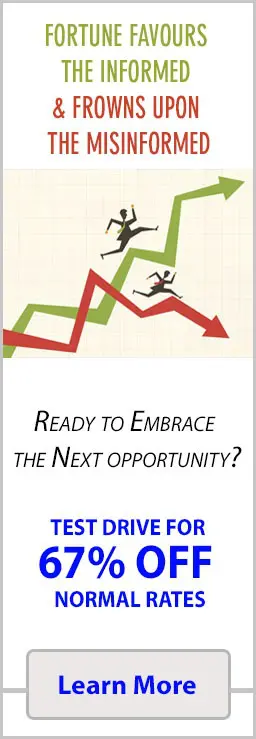
Diamond Hands: Delusion Dressed as Discipline, Ends in Trading Death
Diamond hands”—the myth that turns resolve into ruin. See how discipline mutates, cages minds, and ends in disaster
Birth of a Myth: Diamond Hands as Fortress
Every mania needs its myth, and in the meme-stock coliseum, “diamond hands” is the banner hoisted above the bloodied arena. It begins innocently enough—a rallying cry for resolve in the face of volatility. When the crowd first whispers “diamond hands,” it’s a call to endure, to hold when others panic, to resist the primal urge to cut and run at the first whiff of red. This origin story is seductive: who doesn’t want to imagine themselves as a champion, standing tall while the weak scurry for cover?
The fortress metaphor is apt. Early on, “diamond hands” feels like a shield, a badge for withstanding the slings and arrows of outrageous price swings. In the digital trenches of Reddit, Discord, and Twitter, tales of legendary holders—those who refused to sell when the sky fell—are passed around like sacred scripture. As the myth grows, it’s no longer just about making money. It’s about proving one’s mettle, about belonging to a tribe forged by shared adversity.
But already, the seeds of delusion are sown. Schopenhauer would gaze upon this spectacle and smirk: what masquerades as strength is often cowardice in disguise—a fear of acting alone, masked as group bravery. The crowd’s call to “hold the line” becomes less about personal conviction and more about seeking validation in numbers. The fortress, for all its apparent strength, is built on shifting sand.
The Alchemy of Mass Belief: From Conviction to Cult
The next phase is alchemical. What began as individual discipline—“I won’t sell in a panic”—is transmuted by mass repetition into something more sinister: a cult of conviction, impervious to doubt. The brilliance of the diamond is now a blinding glare, obscuring nuance, eclipsing risk. The crowd sings in unison: never sell, never flinch, never question. Each market dip is retold as a test of character. Every loss is mythologized as a rite of passage.
This is the moment Hannah Arendt would recognize: the birth of the iron cage. The meme hardens into dogma, the tribe polices its own with zeal. To question “diamond hands” is to risk exile. The individual dissolves into the group fantasy, the boundaries between self and crowd blurred by adrenaline and digital applause. Stories of those who “paper-handed” (sold early) are recounted with derision—examples of what not to become.
Druckenmiller’s ghost hovers, whispering warnings unheeded: the market is not a morality play, and conviction without context is fatal. Yet the myth persists, growing by feeding on itself. It’s intoxicating, this sense of shared purpose. The crowd is a fortress now—thick-walled, echoing only its own bravado, shutting out the cold logic of risk management and the faint but persistent voice of doubt.
The Mask of Discipline: When Strength Becomes Stubbornness
The psychological magic trick is complete. Traders who once prided themselves on discipline now find themselves shackled by it. The mask of “diamond hands” cannot be removed, even as the temperature inside the fortress rises to unbearable levels. To sell is to admit weakness. To question is to betray the tribe.
Schopenhauer’s insight cuts deep: the illusion of strength is often most dangerous when it is most convincing. What was once resolved morphs into inertia, a refusal to adapt, a blindness to changing conditions. The trader, having built their identity around being “diamond-handed,” cannot pivot. They are not disciplined—they are trapped.
The contrast is brutal. True discipline is supple, responsive, able to distinguish between a temporary storm and the onset of disaster. The “diamond hands” myth flattens all nuance, demanding faith in the face of all evidence. When prices fall, the crowd chants louder; when the pain grows, the myth becomes more ornate. The diamond, under pressure, is supposed to shine brighter. In reality, it’s the mind that fractures first.
The Fever of Collective Fantasy: Brilliance Turns to Blindness
The fever pitch is reached as the crowd’s myth becomes reality—at least for a time. Prices rally, shorts are squeezed, and the legend of “diamond hands” is etched into market lore. The survivors—those who held through hell and emerged with gains—are exalted as heroes. Their stories are weaponized, replayed in endless loops, reinforcing the cycle.
But here, Arendt’s warning crystallizes: mass narratives become cages, not wings. The individual trader, once capable of independent thought, is now a node in a hive mind. Reason is replaced by repetition. The mantra “never sell” drowns out all else. The market, indifferent to myth, prepares its reckoning.
The brilliance of the diamond is a trap. Every new drop is rationalised as a buying opportunity, every warning sign recast as FUD (fear, uncertainty, doubt) spread by outsiders. The fortress that once offered protection has now become a prison. To question is to invite ridicule; to sell is to be branded a traitor. Social media amplifies the chorus, rewarding conformity and punishing dissent.
The Unraveling: Discipline Curdlings into Disaster
Markets are not kind to rigidity. When reality intrudes—a failed earnings report, regulatory crackdown, or the simple exhaustion of collective buying power—the myth is tested. At first, the crowd doubles down. “We’ve been here before,” they insist. “Diamond hands will win in the end.” But the cracks widen. The fortress is breached from within, not without.
Druckenmiller’s axiom echoes: the graveyards of markets are filled with the stubborn, not the flexible. As prices bleed lower, the bravest begin to waver. The myth, once so powerful, becomes a millstone. The true believers hold through catastrophic losses, their discipline indistinguishable from denial.
The psychological carnage is exquisite. The crowd that once offered solace now enforces silence. Those who sell are shamed; those who hold are lionized until they, too, break. The fortress is revealed as a mausoleum. What began as a shield is now a cage, the brilliance of the diamond replaced by the dull ache of regret.
The unravelling is both rapid and relentless. As the market’s indifference becomes clear, the myth collapses—first in whispers, then in shouts. Confessions of ruin replace screenshots of unrealised gains. The crowd disperses, the iron cage dissolves, and traders are left alone to contemplate the wreckage. The myth that seduced and sustained them becomes the epitaph on the tombstone of their portfolios.
Aftermath: The Silence of the Iron Cage
What’s left after the myth is gone? The fortress has crumbled, the mask lies shattered, and the crowd’s chant reverberates only in empty threads. Each trader is left to face the aftermath in isolation. The iron cage, once invisible, is now painfully apparent. The myth of “diamond hands” did not protect—it consumed.
Arendt’s insight returns: mass narratives, once internalised, are harder to escape than any external threat. The trader who built their strategy, identity, and self-respect on the altar of “never sell” is now adrift, stripped of guidance and community. The market, having no memory, moves on. The individual, haunted by the cycle, is left to pick up the pieces.
Some retreat into bitterness, blaming the market, the crowd, or the myth itself. Others, chastened, begin the slow, necessary work of rebuilding—this time with humility, flexibility, and a healthy suspicion of any narrative that flatters the ego while numbing the mind. The lesson is cruel but clear: the market punishes not just error, but certainty.
The Cycle Reborn: Myth-Making Never Dies
But the story does not end. The meme-stock arena is not a graveyard; it is a revolving door. New myths rise to replace the old. The language changes, the tickers change, but the psychological machinery is the same. Each new generation of traders, hungry for certainty in an uncertain world, will don the mask, enter the fortress, and repeat the cycle.
The myth of “diamond hands” is not unique. It is an archetype—an expression of the human need for meaning, for narrative, for the comfort of the crowd. The market provides the arena, but it is the trader who supplies the fantasy. Schopenhauer, Druckenmiller, and Arendt would all agree: there is nothing new in the spectacle, only new faces, new fortunes, new casualties.
For the market, the myth is useful. It supplies liquidity, volatility, and the raw material for the next round of harvest. For the trader, it is a test—a gauntlet thrown down by the indifferent gods of price action. The only escape is to see the myth for what it is: a story, not a strategy; a mask, not a shield.
The Real Armour: Adaptation Over Dogma
So what is the alternative? If “diamond hands” is a cage, what is true discipline? The answer is as old as markets: adaptation, humility, and the willingness to be wrong. The trader who survives is not the one who never yields, but the one who knows when to bend, when to change, when to walk away.
Discipline is not a meme. It is a practice—messy, uncomfortable, and often lonely. It demands the courage to think independently, the humility to admit error, and the strength to act against the crowd when necessary. The real fortress is built not of slogans, but of self-awareness and a ruthless commitment to reality.
The myth of “diamond hands” will always be seductive because it offers certainty where none exists. But the market is the ultimate myth-buster, and those who cling to delusion will pay the price. The brilliance of the diamond is an illusion; the real challenge is to see through the glare, to recognise the mask, and to refuse the cage.
The Final Reckoning: Brilliance or Burial
In the end, the cycle of “diamond hands” is a cautionary tale—a story of how discipline, warped by mass delusion, curdles into disaster. The fortress becomes a tomb, the myth a trap. The trader who survives the coliseum is not the one who holds the longest, but the one who knows when to let go.
The market will always tempt you with new myths, new mantras, new fortresses. Your only defence is the clarity to see the cycle, the courage to break it, and the discipline to build your strategy from the ruins. Brilliance is not in never selling, but in knowing yourself, your risk, and your limits.
The coliseum will fill again. The crowd will chant again. And somewhere, a new trader will pick up the mask, whisper “diamond hands,” and step into the cycle—brilliant, briefly, before the inevitable burial.












